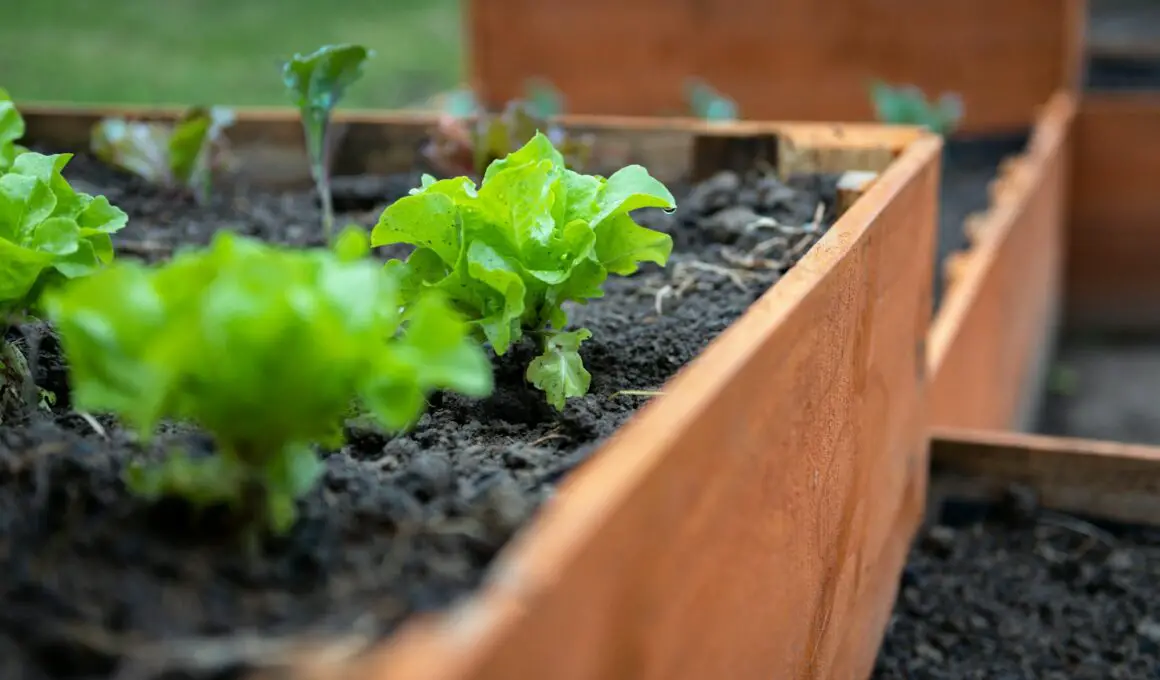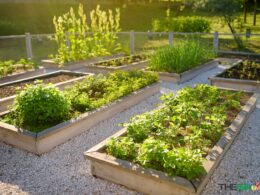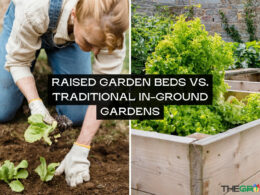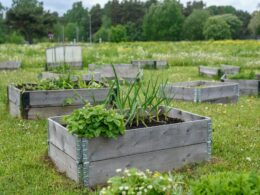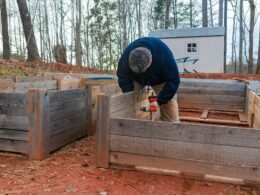In This Article Show
If you’re thinking about starting a raised garden or improving your current setup, the material you choose is crucial for your gardening success. With over 13 years of gardening experience, I’ve seen firsthand how the right materials can influence both the durability of the bed and the health of the plants.
Raised garden beds offer several advantages, including better soil conditions, easier maintenance, and more efficient water usage. However, not all materials are created equal. Some will last longer, while others are more cost-effective or environmentally friendly. In this post, we’ll explore various options from wood to stone and newer, sustainable materials.
Whether you’re a seasoned gardener or just beginning to explore the possibilities of raised bed gardening, I’m here to help you make an informed choice that aligns with your gardening goals and local climate conditions.
Common Materials for Raised Garden Beds
When it comes to choosing materials for your raised garden beds, the options are as varied as the plants you can grow in them. Here’s a detailed look at the most common materials used, including wood, metal, stone, and composite. I’ll share insights into each type’s pros and cons, as well as some practical tips on lifespan and maintenance.
1. Wood
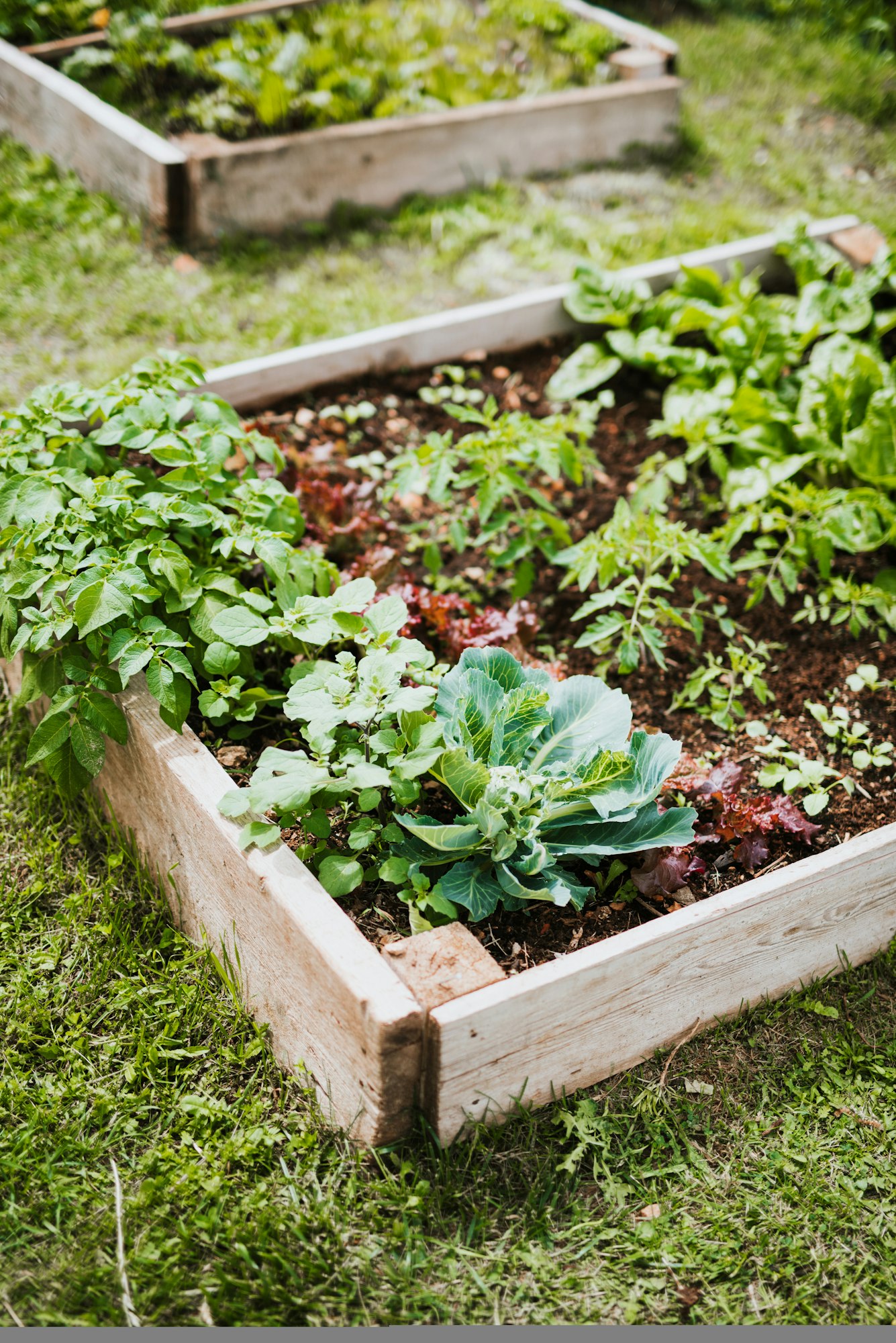
Wood is a popular choice for many gardeners when building raised beds due to its natural look, versatility, and overall affordability. Here are some common types of wood used for this purpose, along with their advantages and potential drawbacks.
Types of Wood Used
Get Gardening For Beginners
Our new EBOOK shows newcomers and green thumbs alike a step by step guide to growing the garden of their dreams.
- Cedar: Renowned for its durability and resistance to rot and insects, cedar is a top choice for raised beds. It has a natural resistance to weathering and doesn’t require much maintenance.
- Redwood: Similar to cedar, redwood is highly resistant to rot and pest damage. It tends to be slightly more expensive but offers a rich color and superior longevity.
- Pine: Pine is the most cost-effective option for many gardeners, but it doesn’t hold up as well as cedar or redwood in terms of durability. It often requires treatment to resist decay and can be a good choice for gardeners on a budget.
Pros and Cons of Using Wood
| PROS | CONS |
|---|---|
| Wood has a natural look that many gardeners find appealing, easily integrating into various garden designs. | Wood may need to be treated to resist rot, pests, and weather-related wear and tear. Without treatment, the lifespan can be significantly reduced. |
| Wood can be easily cut to any size and painted or stained to fit personal preferences. | The need for preservatives and the source of the lumber (e.g., unsustainable logging practices) can be concerns for environmentally conscious gardeners. |
| Wood helps insulate plant roots from temperature extremes, making it a good choice for areas with fluctuating weather. |
Lifespan and Treatment Options
- Lifespan: Depending on the type of wood and environmental conditions, wooden raised beds can last anywhere from 5 to 20 years. Cedar and redwood offer longer lifespans due to their inherent properties.
- Treatment Options: To extend the life of wood beds, you might consider using a natural preservative like linseed oil or a low-VOC, water-resistant sealant. It’s important to avoid chemicals that could leach into the soil and harm plant life
2. Metal
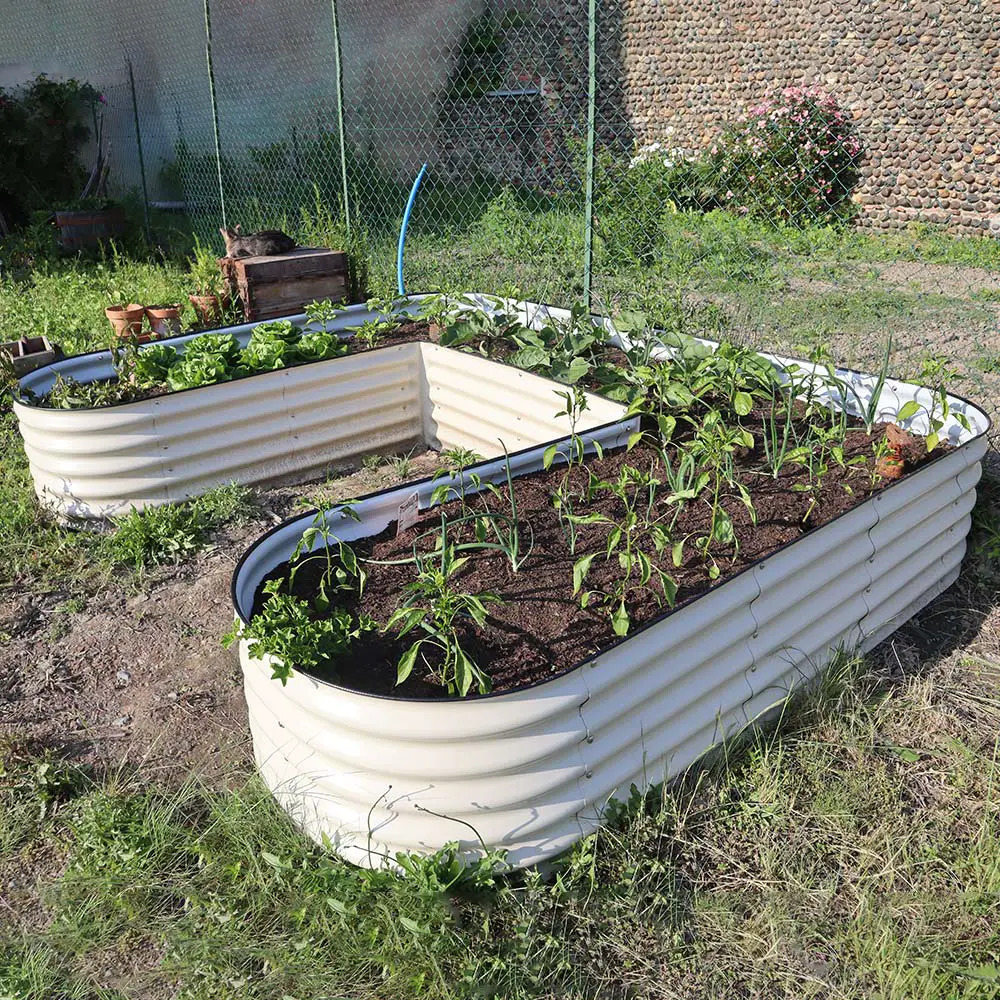
Metal is another increasingly popular choice for constructing raised garden beds due to its durability and modern appearance. Two of the most commonly used metals are galvanized steel and aluminum, each with its specific properties and uses in the garden.
Common Metals Used
Galvanized Steel: This is steel that has been coated with a protective layer of zinc to prevent rust. It is highly durable and resistant to decay, which makes it an excellent choice for raised garden beds.
Aluminum: Aluminum is lightweight and does not rust, making it another popular choice. It’s easier to work with compared to heavier metals and maintains a clean, modern look.
Advantages and Potential Concerns
| Advantages | Potential Concerns |
|---|---|
| Both galvanized steel and aluminum offer excellent longevity and are not susceptible to rot or insect damage, unlike wood. | Metal absorbs heat, which can lead to soil warming up more quickly than in wooden beds. In hot climates, this might stress plants or dry out soil faster. |
| Metal can provide a sleek, contemporary look to garden spaces, with the ability to complement modern landscape designs. | While galvanized steel is treated to resist rust, scratches or damages to the coating can expose the metal and allow rust to develop. Aluminum doesn’t rust but can corrode over a very long period or if exposed to certain chemicals. |
| Metal-raised beds require little maintenance. They do not need to be treated with preservatives or stains. | Generally, metal is more expensive than wood, especially high-quality options like galvanized steel, which might affect budget considerations for gardeners. Installation and Use |
Installation and Use
Get Gardening For Beginners
Our new EBOOK shows newcomers and green thumbs alike a step by step guide to growing the garden of their dreams.
- Installation: Metal-raised beds are often available in pre-fabricated kits that are simple to assemble. Their lightweight nature, especially aluminum, makes installation easier than heavier materials.
- Use Considerations: When using metal raised beds, it might be beneficial to line the interior with a barrier like landscape fabric to protect the metal from direct soil contact and to manage the temperature by providing some insulation.
3. Concrete Blocks
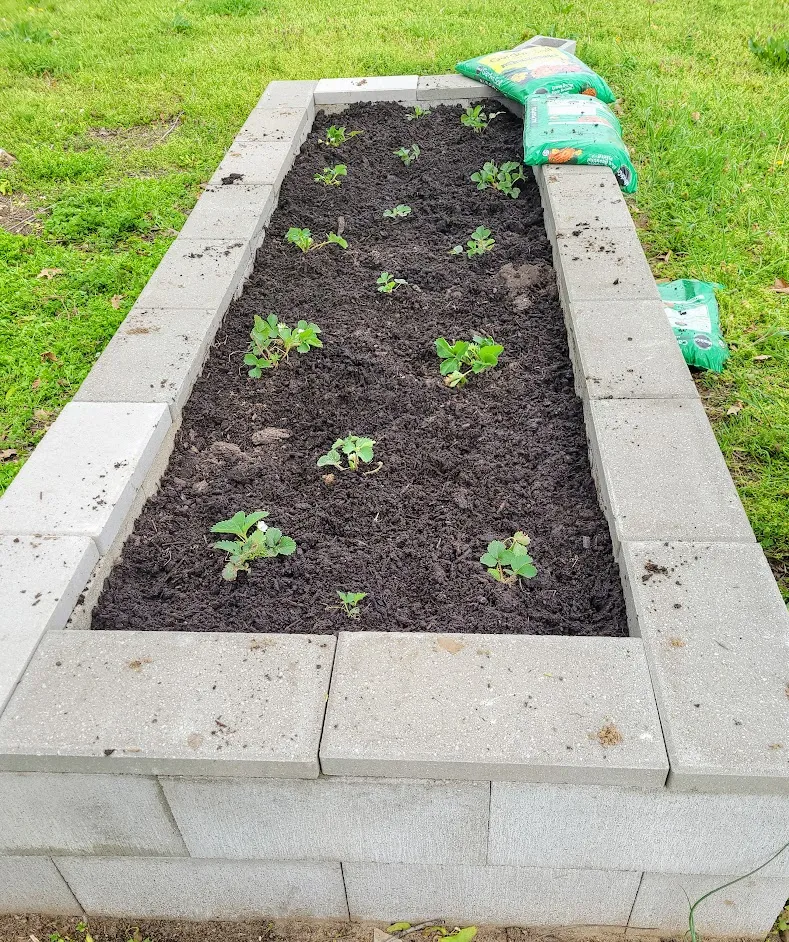
Concrete blocks, often referred to as cinder blocks or masonry blocks, provide a sturdy and versatile option for constructing raised garden beds. These blocks are commonly used in landscaping for their structural integrity and ease of assembly.
Benefits of Using Concrete
- Durability: Concrete blocks are extremely durable and resistant to weathering and decay. They do not rot, warp, or succumb to pest infestations, which makes them an ideal long-term solution for raised beds.
- Versatility: These blocks can be used to create garden beds of various shapes and sizes. Their modular nature allows for easy customization.
- Thermal Mass: Concrete has high thermal mass, absorbing heat during the day and releasing it slowly at night, which can help stabilize soil temperatures, particularly in cooler climates.
Drawbacks to Consider
- pH Level Changes: Concrete can leach lime into the soil, gradually increasing the pH level. This shift might be detrimental to plants that prefer more acidic conditions, such as blueberries or azaleas. Regular soil testing and amendments may be necessary to maintain the desired pH balance.
- Weight: Concrete blocks are heavy, making them difficult to move once they are in place. This can make the initial setup challenging and does not allow for easy reconfiguration of garden layouts.
- Aesthetic Concerns: While practical, concrete blocks may lack the visual appeal of other materials like wood or metal and might require additional aesthetic treatments, such as painting or covering with stone veneer, to enhance their appearance in garden settings.
Installation Tips
- Foundation: Due to their weight, it’s important to prepare a solid, level base for concrete block raised beds to prevent settling and shifting.
- Construction: Building with concrete blocks does not usually require mortar; blocks can be stacked and secured with rebar or adhesive to enhance stability.
- Insulation: In very hot climates, the thermal mass of concrete might cause the soil to overheat. Using mulches or planting ground covers can help mitigate excessive soil temperature fluctuations.
4. Recycled Materials
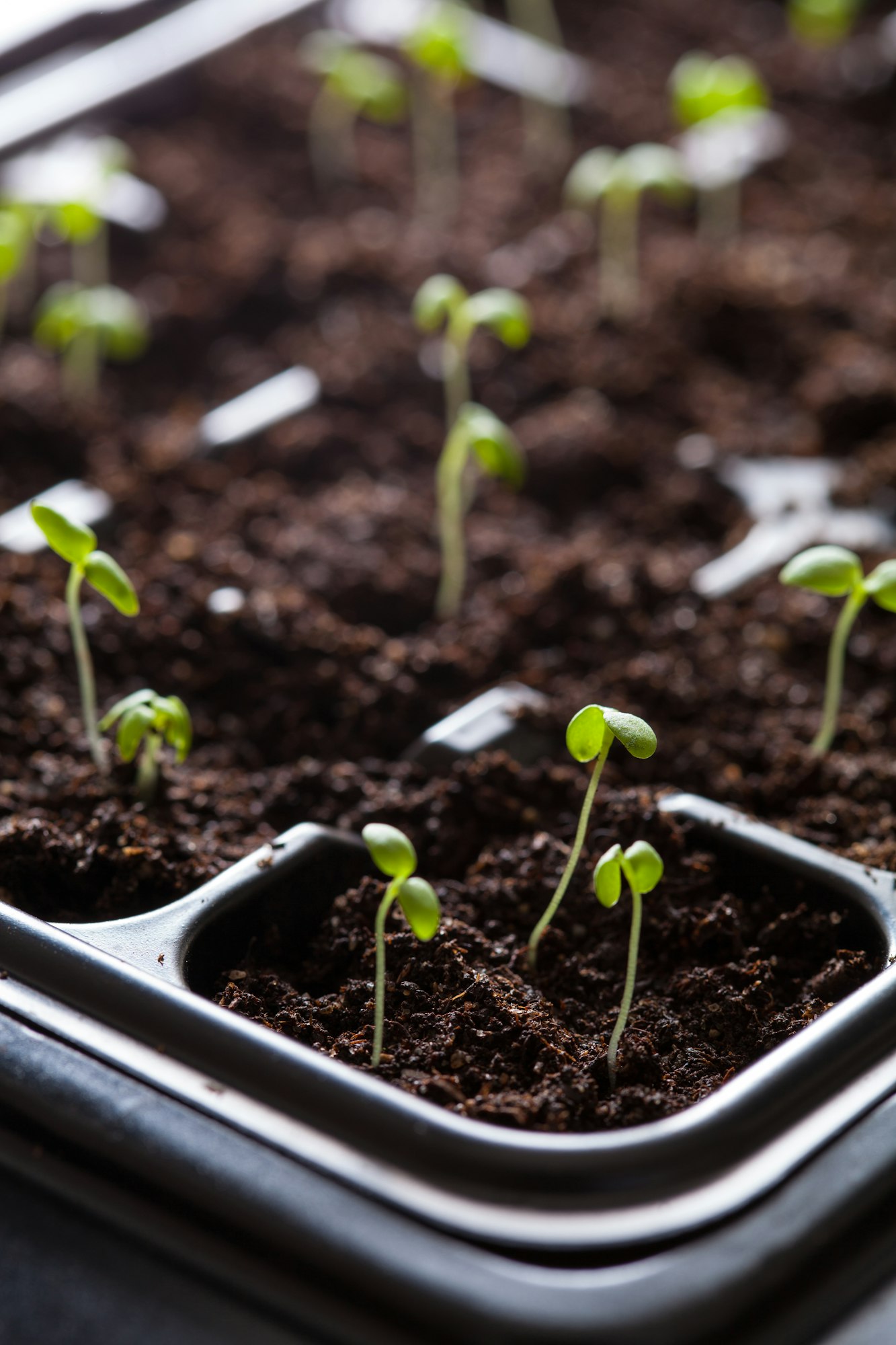
To promote sustainability and reduce waste, many gardeners are turning to recycled materials, such as plastics and composites, to construct raised garden beds. These materials not only help in conserving natural resources but also provide functional benefits in the garden.
Using Recycled Plastics or Composites
- Types: Recycled plastics and composites used for raised beds often come from consumer waste, like recycled plastic bottles or composite decking material made from a blend of plastic and wood fibers.
- Availability: Many manufacturers offer garden bed kits made from recycled materials. These kits are pre-cut and designed for easy assembly, making them a convenient option for DIY gardeners.
Sustainability
- Environmental Impact: Using recycled plastics for garden beds helps reduce landfill waste and the demand for virgin materials. It supports a circular economy where materials are reused and repurposed rather than discarded.
- Longevity: Products made from recycled plastics are resistant to decay, rot, and pest infestations, contributing to their long-term sustainability in a garden setting.
Durability
- Weather Resistance: Recycled plastic and composite materials are highly resistant to weather elements, including moisture, which makes them ideal for outdoor use in various climates.
- Maintenance: These materials require little to no maintenance. Unlike wood, they do not need to be treated with sealants or preservatives to maintain their condition.
- Strength and Stability: While generally durable, the structural integrity of recycled plastic and composites can vary depending on the quality of the material and the design of the bed.
5. Stone
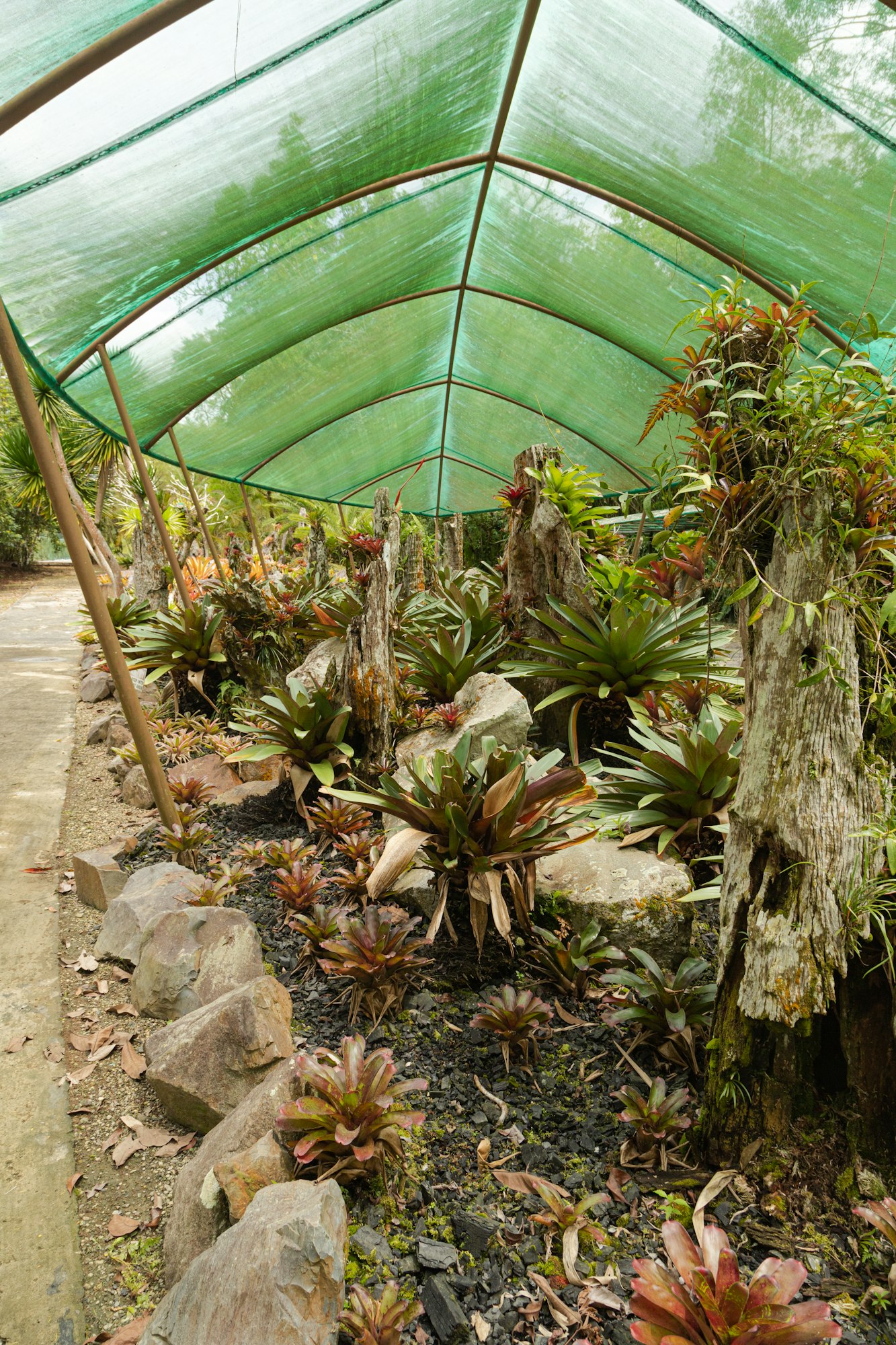
Stone is a timeless and natural choice for constructing raised garden beds, favored for its aesthetic appeal and structural durability. It brings a touch of elegance and a classic look to any garden setting
Aesthetic Appeal of Natural Stone
- Visual Impact: Stone offers a beautiful, natural appearance that can enhance the overall look of a garden. It comes in a variety of colors, textures, and shapes, allowing for unique and personalized garden designs.
- Integration with Landscaping: Due to its natural aesthetic, stone easily blends with the surrounding landscape, whether in a rustic country garden or a more formal structured space.
Installation Challenges
- Weight and Handling: One of the primary challenges with using stone is its weight. Stones are heavy, making them difficult to transport and maneuver during installation. This often requires additional labor or mechanical assistance.
- Skill Required: Properly constructing stone-raised beds can require some masonry skills, particularly if the mortar is used to secure the stones. Dry stacking, although simpler, still requires a keen eye for balancing and stabilizing the stones.
- Time Investment: Building with stone can be more time-consuming than using pre-fabricated materials. The process of laying and fitting individual stones to achieve a stable and attractive result takes patience and care.
Durability
- Longevity: Stone is extremely durable and can last for decades if constructed well. Unlike wood or metal, it does not rot, corrode, or degrade over time.
- Maintenance: Stone beds require minimal maintenance. They do not need to be treated or replaced frequently, making them a cost-effective option in the long run despite the initial investment.
- Weather Resistance: Stone is highly resistant to all weather conditions, from harsh sun to freezing temperatures, making it suitable for a variety of climates.
Considerations
- Cost: The initial cost of stone can be higher than other materials due to the price of the stone itself and potentially higher delivery and installation costs.
- Soil Conditions: Stone can affect the temperature of the soil it encloses, particularly in sunny areas where stone can heat up, potentially warming the soil excessively. Mulching and strategic planting can mitigate these effects.
Stone-raised garden beds offer a robust and picturesque option for gardeners looking for a permanent and aesthetically pleasing solution. They are particularly suitable for garden designs that aim for a natural, harmonious appearance with the surrounding environment.





